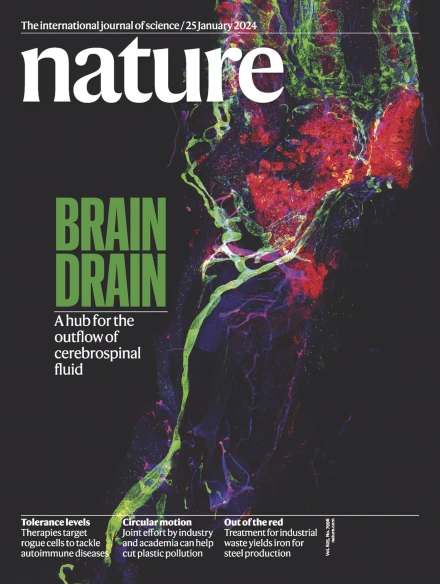单细胞 RNA 测序揭示人类和小鼠早期胚胎的遗传程序
IF 48.5
1区 综合性期刊
Q1 MULTIDISCIPLINARY SCIENCES
引用次数: 801
摘要
这项研究利用单细胞RNA测序和加权基因共表达网络分析来研究植入前胚胎和卵母细胞的转录组变化;研究揭示了人类和小鼠之间保守的遗传程序,但具有不同的发育特异性和时间性,以及可能在植入前发育中起关键作用的保守枢纽基因。这项早期胚胎发育研究利用单细胞 RNA 测序和加权基因共表达网络分析(WGCNA)获得了人类和小鼠植入前胚胎和卵母细胞的详细基因表达谱。作者发现了少数关键功能模块,这些功能模块决定了不同通路中转录变化的先后顺序。他们还发现了人类和小鼠网络中保守的关键枢纽基因,并认为这些基因可能是驱动哺乳动物植入前发育的关键因素。哺乳动物的植入前发育是一个复杂的过程,涉及转录结构的巨大变化1,2,3,4。我们在此报告利用单细胞 RNA 测序对人类和小鼠胚胎从卵母细胞到蜕膜的转录组动态进行了全面分析。基于人类胚泡信使核糖核酸中的单核苷酸变异和父系特异性单核苷酸多态性,我们为相当一部分多态性基因转录本(25% 到 53%)确定了新的阶段特异性单倍表达模式。通过加权基因共表达网络分析5,6 ,我们发现每个发育阶段都可以通过少量共表达基因的功能模块来简明地划分。这一结果表明,细胞周期、基因调控、翻译和新陈代谢等通路的转录变化有先后顺序,从裂殖期到蜕膜期呈阶梯式变化。与小鼠植入前胚胎的跨物种比较显示,人类的大多数阶段特异性模块(9 个中的 7 个)都得到了显著保留,但人类和小鼠的发育特异性和时间安排却有所不同。此外,我们还发现了人类和小鼠网络中保守的关键成员(或中枢基因)。这些基因代表了新的候选基因,它们可能是驱动哺乳动物植入前发育的关键基因。总之,这些结果为剖析哺乳动物早期胚胎渐进发育的基因调控机制提供了宝贵的资源。本文章由计算机程序翻译,如有差异,请以英文原文为准。

Genetic programs in human and mouse early embryos revealed by single-cell RNA sequencing
Single-cell RNA sequencing and weighted gene co-expression network analysis are used to study transcriptome change in pre-implantation embryos and oocytes; this reveals a conserved genetic program between human and mouse but with different developmental specificity and timing, and conserved hub genes that may be key in pre-implantation development. This study of early embryonic development uses single-cell RNA sequencing and weighted gene co-expression network analysis (WGCNA) to obtain a detailed gene expression profile of human and mouse pre-implantation embryos and oocytes. The authors identify a small number of key functional modules that shape a sequential order of transcriptional changes in various pathways. They also found key hub genes that are conserved between human and mouse networks and argue that these genes may be key players in driving mammalian pre-implantation. Mammalian pre-implantation development is a complex process involving dramatic changes in the transcriptional architecture1,2,3,4. We report here a comprehensive analysis of transcriptome dynamics from oocyte to morula in both human and mouse embryos, using single-cell RNA sequencing. Based on single-nucleotide variants in human blastomere messenger RNAs and paternal-specific single-nucleotide polymorphisms, we identify novel stage-specific monoallelic expression patterns for a significant portion of polymorphic gene transcripts (25 to 53%). By weighted gene co-expression network analysis5,6, we find that each developmental stage can be delineated concisely by a small number of functional modules of co-expressed genes. This result indicates a sequential order of transcriptional changes in pathways of cell cycle, gene regulation, translation and metabolism, acting in a step-wise fashion from cleavage to morula. Cross-species comparisons with mouse pre-implantation embryos reveal that the majority of human stage-specific modules (7 out of 9) are notably preserved, but developmental specificity and timing differ between human and mouse. Furthermore, we identify conserved key members (or hub genes) of the human and mouse networks. These genes represent novel candidates that are likely to be key in driving mammalian pre-implantation development. Together, the results provide a valuable resource to dissect gene regulatory mechanisms underlying progressive development of early mammalian embryos.
求助全文
通过发布文献求助,成功后即可免费获取论文全文。
去求助
来源期刊

Nature
综合性期刊-综合性期刊
CiteScore
90.00
自引率
1.20%
发文量
3652
审稿时长
3 months
期刊介绍:
Nature is a prestigious international journal that publishes peer-reviewed research in various scientific and technological fields. The selection of articles is based on criteria such as originality, importance, interdisciplinary relevance, timeliness, accessibility, elegance, and surprising conclusions. In addition to showcasing significant scientific advances, Nature delivers rapid, authoritative, insightful news, and interpretation of current and upcoming trends impacting science, scientists, and the broader public. The journal serves a dual purpose: firstly, to promptly share noteworthy scientific advances and foster discussions among scientists, and secondly, to ensure the swift dissemination of scientific results globally, emphasizing their significance for knowledge, culture, and daily life.
 求助内容:
求助内容: 应助结果提醒方式:
应助结果提醒方式:


